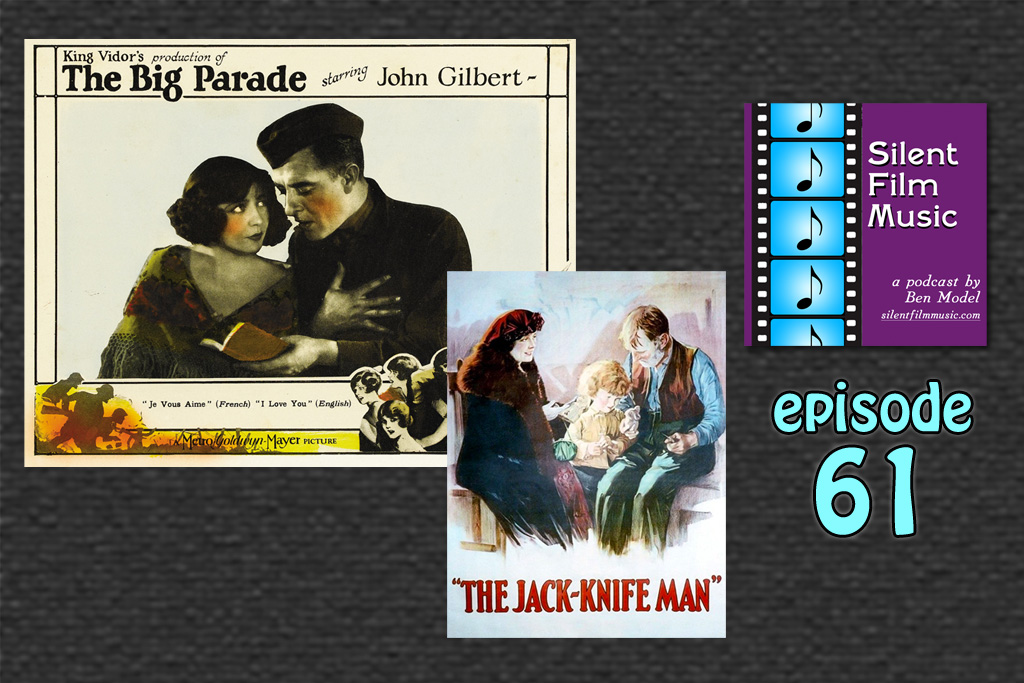
Episode 61 Show Notes: “Improvising Themes for Re-Use and Development”
Theme & Introductions
Ben and Kerr discuss the dearth of holiday movies from the Silent Era
- “There Ain’t No Santa Claus” (1926) starring Charley Chase (from ep. 97 of The Silent Comedy Watch Party)
Ben talks about recording the new Podcast Theme on a grand piano at MOMA.
- The saga of the Chrome-Legged Steinway…
- Why being an itinerant pianist or theater organist is like playing baseball
Playing for THE BIG PARADE at the Elmont Memorial Library, introduced by Philip Harwood
- Trying to find a steady tempo for the march through the woods, despite director King Vidor claiming that the scenes were shot to a drumbeat on set
- Scoring the “charm sequence” of the chewing gum scene in THE BIG PARADE. (seen in the linked clip with music by Carl Davis) Re-using the established theme and using stop-and-go accompaniment
- Using the template established by D.W. Griffith to create an historical epic by foregrounding the love story
A’ SANTANOTTE (The Holy Night) at the Museum of Modern Art as part of the Women Film Pioneers Project
- Ben discusses creating a theme to be used both as an on-screen performance (diagetic) and as underscore
- How the Italian setting influenced the sound of the music
- How to memorize a theme as you are improvising it, as taught by Lee Erwin
- Playing in dialogue with the film
The end of THE JACK-NIFE MAN and THE SEVENTH DAY as of part of Modern Matinees: In Celebration of Adrienne Mancia at the Museum of Modern Art
- Ben discusses his method of transitioning from one film to another
- Ending with a theme, wrapping up, and anticipatory music for the next film
- When and how to use ragtime in silent film accompaniment
- Using mood cues or pop songs and pivoting with the changes in the film
- Development of editing grammar over the course of the Silent Era (flat cuts vs. fade-outs or lap dissolves to mark transitions, how to show what a character is thinking)
Accompanying Laurel & Hardy silent shorts
- Using the Ku-ku theme to for the sake of audience expectation and recognition
- Referencing the Leroy Shield – Marvin Hatley themes
- Playing with the rhythms of the performances of Laurel & Hardy, especially how they process ideas, and the “rhythm of their relationship”
Ben’s New Year’s Resolution
- Akira Kurosawa accepting an Oscar and hoping that he will do better and someday grasp what cinema is
- Striving to improve, to challenge himself, to develop ways to score films (playing less)
- The purpose of offering his ideas is not to dictate a solution, but to share the struggle
Goodbyes and Thanks